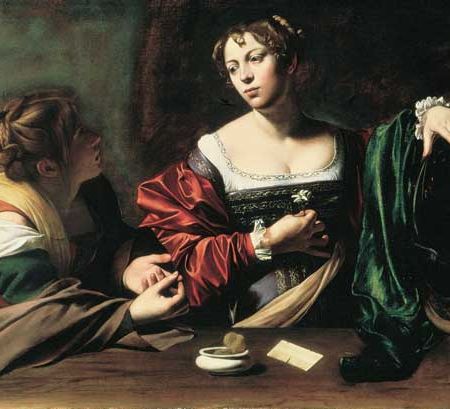Museum Kunst Palast presents Caravaggio, on view through July 1, 2007. Only very few artists have given rise to so much fascination and speculation about their lives and work as did the Italian painter Michelangelo Merisi, also known as Caravaggio (1571-1610). Having trained in Milan and Rome, he subsequently worked in southern Italy and Malta. Within a very brief period of creativity this co-founder of the Baroque period succeeded in revolutionizing the art of painting.
After many years of preparation museum kunst palast in Dsseldorf presents an overview of some extraordinary imagery, compiled by Jrgen Harten, Berlin. Not only did these works lead to the painter's European-wide fame, they were also widely imitated while he was still alive and gave rise to a style which was subsequently continued by his artistic successors.
The exhibition comprises over 30 high-calibre items on loan from international art galleries and renowned private collections. It will be shown in Dsseldorf alone.
Caravaggio's art was very much valued and in demand even during his lifetime. This was due to his masterly expertise in achieving dramatic effects of light and shade. His clients included ecclesiastical dignitaries, Roman nobility and collectors. His art, which can still be admired in numerous churches in Italy, Sicily and Malta, did much to overcome the style of mannerism which had prevailed until then. In the 17th century, Caravaggio's style made an impression on a whole range of important artists such as Velazquez, Rubens and Rembrandt, and indeed led to an entire movement within Baroque art, called Caravaggismo.
During the next two centuries Caravaggio gradually fell into oblivion and did not attract renewed attention until the early 20th century. Today, Caravaggio is again at the centre of research in art history and is considered to be one of the greatest masters of European painting.
The history of Caravaggio's work and career also includes his legendary biography. His life can be traced in court documents and official sources that bore witness to his rather contentious character as well as to ecclesiastical sponsors, artistic successes, manslaughter, an escape from the hand of the law, a papal pardon and a mysterious untimely death.
Religion, the erotic and violence are among the major subjects of Caravaggio's effectively composed paintings. Using models whom he often engaged straight from the street, he employed a highly realistic and mostly unconventional way of depicting scenes from biblical stories. He painted saints with dirty soles and with blood gushing from their injured bodies, and the faces in his art include not only the young but also the old and wrinkled. His art frequently reflected a secularization of religious subjects. Being extremely skilled at creating dramatic lighting effects, Caravaggio painted a large number of works with an almost cinematographic effect.


































